About a week ago,
I attended a trip through Haredi Jerusalem. It was organized for tour guides, much like my trip in downtown Haifa. So often we here about the Haredi population in Israeli News, but we don’t often take the time to visit their neighborhoods, to understand their lifestyles, and to learn where they fit into our society. But with this trip, I was able to begin to do all of that, and then some. It was interesting, intriguing, and I intend to use it as a starting point for further understanding and learning.
Who are Haredi Jews?
Haredi Jews are Jews we call in English ultra- Orthodox. The word Haredi comes from the Hebrew word Le’Hared, meaning to shake, and that word is used to label this denomination because they fear and respect G-d until they shake. There are many groups within the Haredi community, who follow different leaders and dress in different clothing. Haredi Jews are different from Modern Orthodox and mainstream Orthodox Jews. Modern Orthodox Jews and mainstream Orthodox Jews are incorporated in general society, while Haredi Jews segregate themselves a little bit more. Haredi Jews do not generally work outside their communities. They learn in their own schools and live within their own communities.
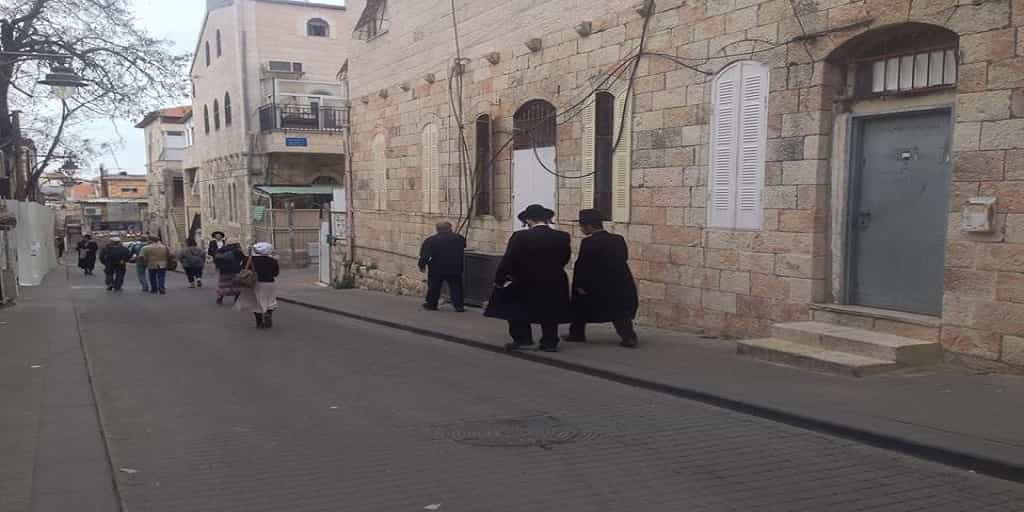
Now, I have to take a moment to explain the different kinds of Haredim. Different sects are led by different rabbis and leaders. The Haredi Jews living in Mea Shearim are parts of several different groups, such as Breslev, Satmar, and Slonim. Throughout our day we came across groups such as Toldos Aharon, Toldos Avraham Yitzhak, and those who live in Betei Varsha.
Different groups have different ideas concerning interacting with the outside world, working, and receiving governmental assistance. We can see the differences in the communities receiving Israeli tax money for assistance. Betei Varsha does not receive any assistance at all, and their homes and communities are quite run down. Mea Shearim does receive government money, and we can see that the community is doing a bit better. There is certainly a correlation between the money they get and how much protesting the community partakes in. Betei Varsha is a very quiet community, while Mea Shearim makes much more noise.
We started our trip of Haredi Jerusalem in Davidka Square,
on the edge of the center of Haredi neighborhoods. Davidka Square is a central square in Jerusalem. To the south of the square are more secular or traditional neighborhoods. To the north are the Haredi neighborhoods. Many people call all of this area Mea Shearim, however this is a mistake. Mea Shearim is one of several neighborhoods in Haredi Jerusalem.
We began walking along Yechiel Michel Pines Street, lined with many stores selling kosher phones. There are two different kinds of kosher phones. The first kind is any phone that is NOT a smartphone. The second kind is a smartphone that has filters preventing certain applications or website pages from opening. This is done in order to maintain a modest and proper lifestyle. The Prima Classy is a central hotel in the Haredi world. It was the first Haredi hotel built in Jerusalem and caters to the needs of Haredi guests. The Hotel is also a commonplace for shidduchim.
It was built by the Porush family, who are a Haredi family themselves. They are a big family in Israel and have had parliament mandates since the first Knesset. Ever since they have had 2-3 mandates in every parliament. But because of their connection to the Zionist government, the family has paid a large social price in their communities. While they believe deeply in the Haredi ways, they still participate in the Zionist government, which goes in contrast to some of the anti-Zionist communities.
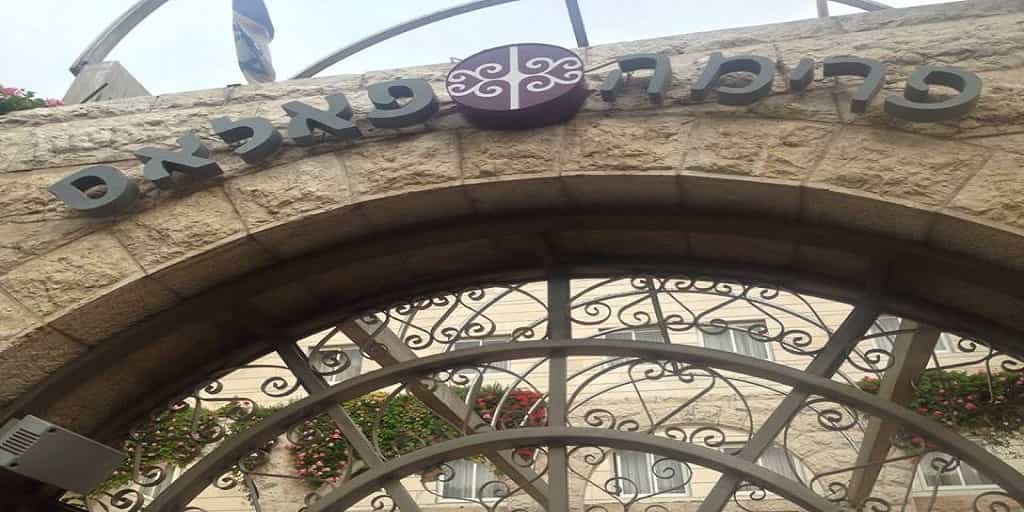
There is a store on the street called A. Bargedah Yavoh located on Pines 6 (פינס 6). The store owner fixes all kinds of mixers. They sometimes will import American brands of mixers and have them broken in order for a Jew to be able to complete the work.
Heading into Makor Baruch and Geula,
we can see the difference in the architecture. The first residents learned from the mistakes of the other early neighborhoods outside of the Old City walls. They built buildings with courtyards in the center. The contractors build the apartments around the courtyards. These buildings have lasted much better than some of the other buildings in Jerusalem.
The granddaughter of Rav Aryeh Levin lives at 8 Solovitzik Street. Rabbi Aryeh Levin was born on March 22, 1885 in Russia. He moved to Jerusalem in 1905 as a rabbi. His neighbors and followers called him the “Rabbi of the Prisoners,” because of his work with Jewish prisoners in British Mandate prisons and for visiting the sick, especially those who did not have family. He is described as having humility, kindness, and respect for everyone, and was a beloved figure in Jerusalem—among both religious and secular. It is here that his granddaughter works on publications of his work and his teaching.
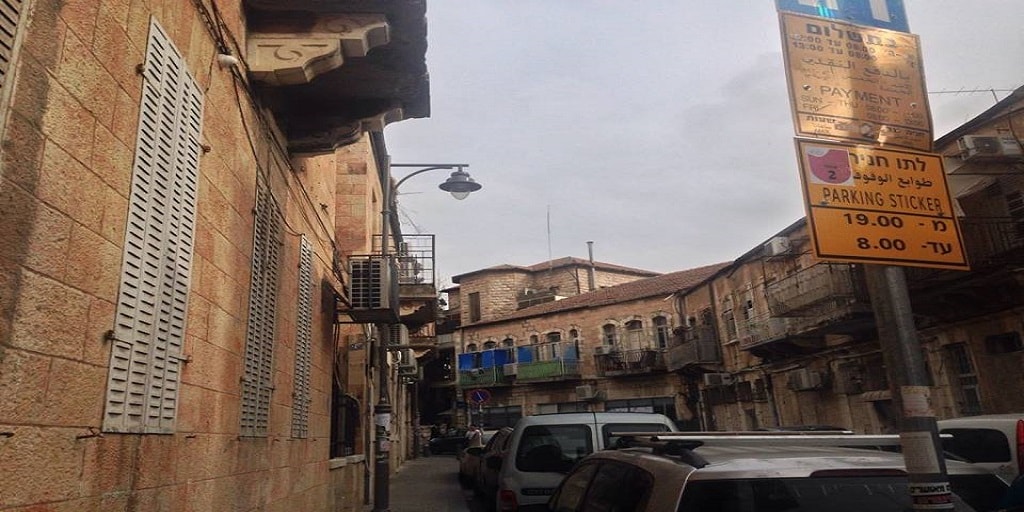
In Haredi Jerusalem, we can see many different shteibels. A shteibel is a building with lots of different rooms for minyans, or quorums of 10 men for prayer. The shteibel began in Europe from the need to have a place to pray close to work. Men would go to work and needed a place close by to pray. However, everyone didn’t have the same exact break for prayers, so the shteibels would provide a space for constant prayer. At any given moment, prayers may be beginning or ending.
Thursdays are the day to put up new posters that are so typical of Haredi Jerusalem.
The posters are like updates or newspapers of the community. There are several different kinds of posters. The first kind of posters are called poshkalivili. These are ‘messages of the day.’ Each of these posters have the signatures of the community’s rabbi. It is a sort of stamp arrival. The second kind of posters are posters ‘of the streets.’ These posters warn the community of different issues, call residents to protests, etc. Rabbis also stamp their signatures on these kinds of posters. The third kind of posters are those that residents put up on Fridays right before Shabbat, so no one can take them down. This kind do NOT have the Rabbis’ names on the fliers.
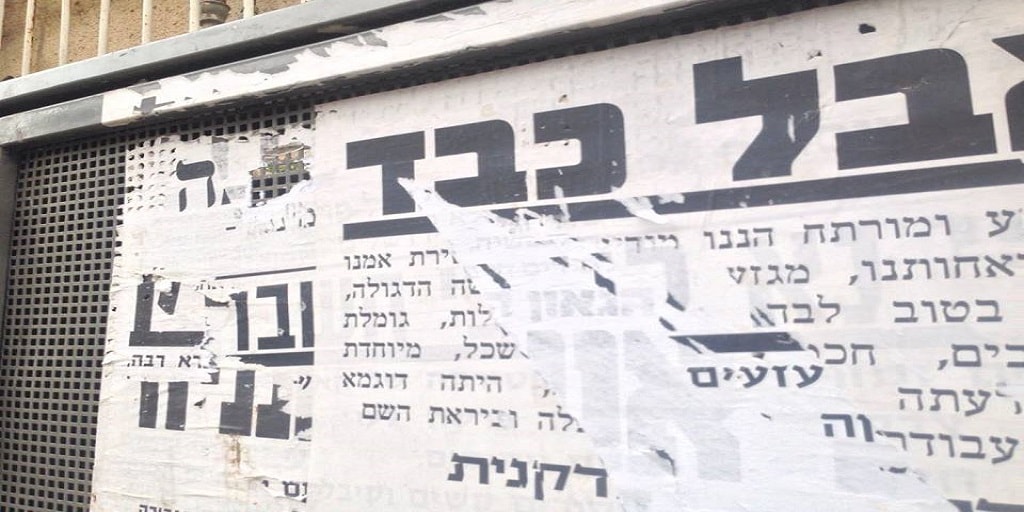
On the streets you can see a lot of gemachim, or charity spots, located for the needy to be able to take household items they may need. Near one of them we saw, another service for those in need. Well- off residents buy religious books to donate and put it on the bookcase. Poorer residents can take the books and put a few shekels in a box connected to the bookcase. This way they can say they own the books.
One of the special staples of Haredi Jerusalem is the culinary scene.
If you’re looking for old school Eastern European Jewish food, Haredi Jerusalem is where to go. We made a stop to eat sweet and salty kugels (casseroles), gefilte fish (fish patties), and cholent (stews). The Avihayil Bakery works 24/7, except the hours of Shabbat. It is a newer bakery (as in it is only 50 years old), and the bakers are all from the same family living in East Jerusalem. It is the same family working in the bakery for the past 50 years when they opened. The Ayala Bakery on 5 Malachei Yisrael Street bakes only bread and the traditional Friday night challot– braided loaves of bread made specifically for Shabbat and Jewish holidays. There are a few different recipes depending on your families, but the smell of baking challah is a beloved smell in the Jewish home.
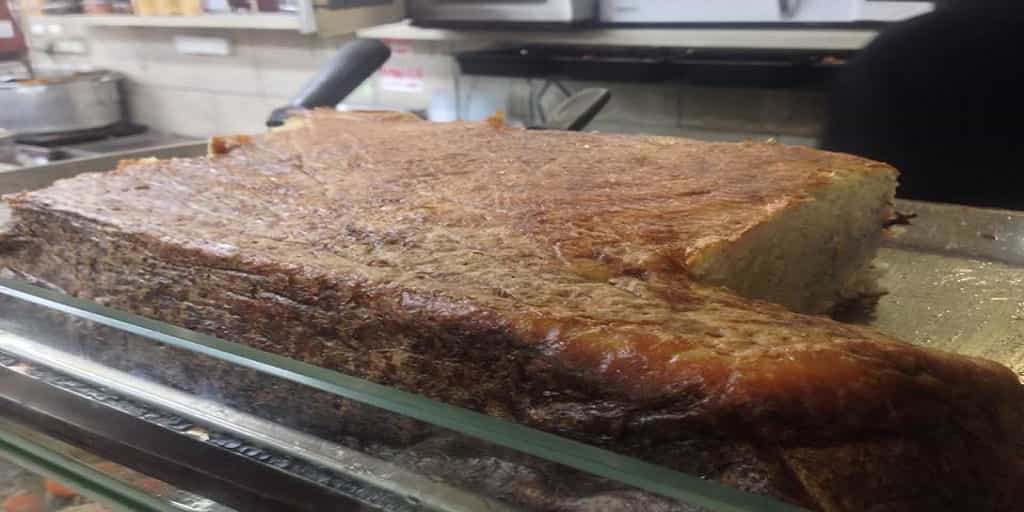
Rav, or Rabbi, Bloy was an important figure in Haredi Jerusalem, and in the Haredi world and here at Shabbat Square. Rav Bloy may have been extreme his anti- Israel sentiment, but he was relatively open-minded in terms of his family life. He married a German Jewish convert at a time when Jewish- German relations were cold, and when Haredi communities tended to marry according to status. (Converts would marry converts, leaders would marry leaders, etc.). During the building of Bar Ilan Street, Rav Bloy started a protest of the street because building took place of Shabbat (a violation of the rules of keeping the Sabbath). Many of his followers joined him, and it caused a lot of controversy in Jerusalem, Israel, and the news.The municipality named the square Shabbat Square remembering his role in this story.
It is next to impossible to miss the entrance into the Mea Shearim neighborhood.
There is a big sign asking people to wear modest clothing and respect the lifestyle of the community. The Haredi community living in Mea Shearim live a very strict lifestyle. They wear clothing that will cover their knees and elbows, and with shirt collars up to their collarbones. Boys and men will always wear a kippa or yarmulke on their heads. Married women cover their hair completely with a head scarf or wig. Families tend to be very big, with many children.
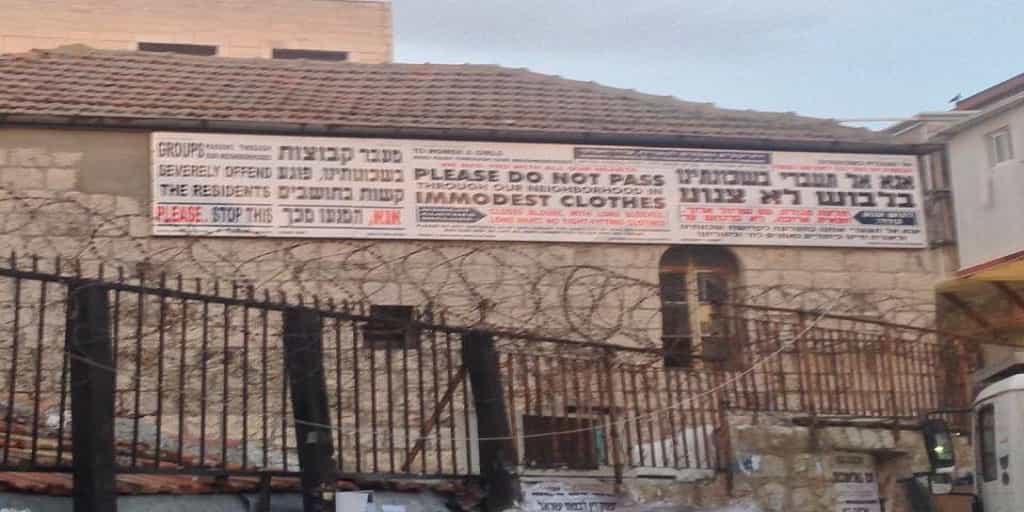
While many of the residents here speak Yiddish fluently and on a daily basis, children learn Hebrew, grammar, and math in schools. Their educational system is very high.
Our last stop of the day was a very special bakery in Mea Shearim.
The bakery has been in business since the neighborhood’s founding. The bakery has been passed down from father to son ever since. What is so special about this bakery is that it is only open on Thursdays. They spend all day and into the night making the challot for families to eat on Friday nights when Shabbat begins. The bakers use only old- fashioned baking tools. They make their challot specifically to the likings of their customers—in size and taste.
We ended the day in Haredi Jerusalem exploring and enjoying the streets on a typical Thursday evening. Thursdays at 5:00 pm is when the week’s learning, the week’s regular hustle and bustle stop, and everyone comes out to just enjoy the stores and have some family time. Families go out to eat, fathers take children out for the evening, so mothers can go to the gym, shop, attend events, etc. It is a great way to experience and feel the atmosphere of the Haredi communities of Jerusalem.
I had such a good time on this trip, and I would love to take international visitors to Haredi Jerusalem. I learned a lot and gained a greater understanding of people who live nearby. A lot of the food we ate reminded me of the food of my grandparents and great-grandparents. While my family wasn’t Haredi, what this trip really taught me more than everything else it that we are all family. The Jewish world and community will always be interconnected. So instead of judging and critiquing, we should all open up our hearts and minds to each other and embrace our neighbors and our families and others who are different from us.





